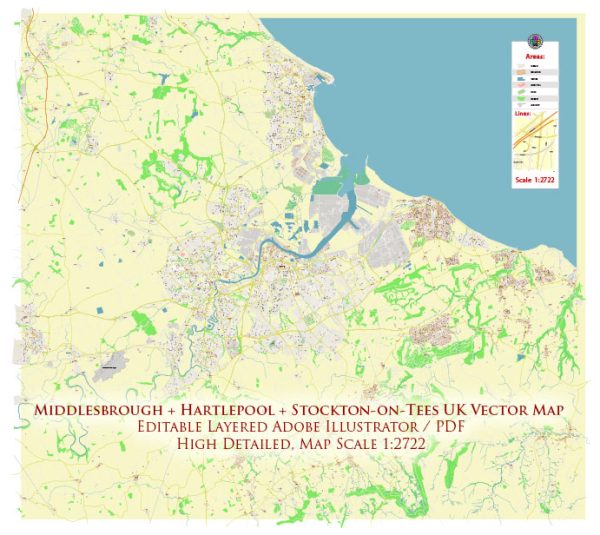The history of urban development in Middlesbrough, Hartlepool, and Stockton-on-Tees in the United Kingdom is closely tied to the region’s industrial and economic evolution. Each of these towns played a significant role in the development of the Teesside area, particularly during the 19th and 20th centuries.
- Middlesbrough:
- 19th Century: Middlesbrough’s growth was primarily driven by the establishment of the iron and steel industry. The town expanded rapidly in the mid-19th century with the construction of docks and railway connections. The Cleveland Ironstone mining boom in the surrounding areas further fueled industrialization.
- Industrialization: The opening of the Middlesbrough Dock in 1842 and the arrival of the railway in 1853 facilitated the transportation of goods, contributing to the town’s industrial success. Iron and steel production, shipbuilding, and chemical industries became prominent, attracting a large working population.
- Hartlepool:
- Maritime Heritage: Hartlepool has a rich maritime history, with shipbuilding and the seaport playing crucial roles. The Historic Quay area, known as Hartlepool’s Maritime Experience, preserves the town’s naval heritage, including the National Museum of the Royal Navy and the HMS Trincomalee, a restored frigate.
- Industrialization: Like Middlesbrough, Hartlepool experienced industrial growth in the 19th century. The expansion of shipbuilding and the presence of coal mines in the surrounding areas contributed to economic development.
- Stockton-on-Tees:
- Transportation Hub: Stockton-on-Tees has a long history as a transportation hub. The town’s significance grew with the establishment of the world’s first railway to use steam locomotives for both passenger and freight traffic—the Stockton and Darlington Railway in 1825.
- Quayside Development: The town’s quayside along the River Tees played a crucial role in trade and commerce. Warehouses and facilities were developed to handle goods transported by river and later by rail.
- Post-World War II:
- The post-World War II period saw changes in the economic landscape. Deindustrialization and the decline of traditional industries had an impact on the region. However, efforts were made to diversify the economy and attract new industries.
- Contemporary Development:
- In recent years, there have been efforts to regenerate and revitalize urban areas. Redevelopment projects, cultural initiatives, and investments in education and technology have aimed to transform these towns into more diverse and sustainable communities.
These towns, once driven by heavy industry, have adapted to economic changes over time. The Teesside area continues to evolve, blending its industrial heritage with modern developments and a focus on sustainability and regeneration.


 Author: Kirill Shrayber, Ph.D.
Author: Kirill Shrayber, Ph.D.